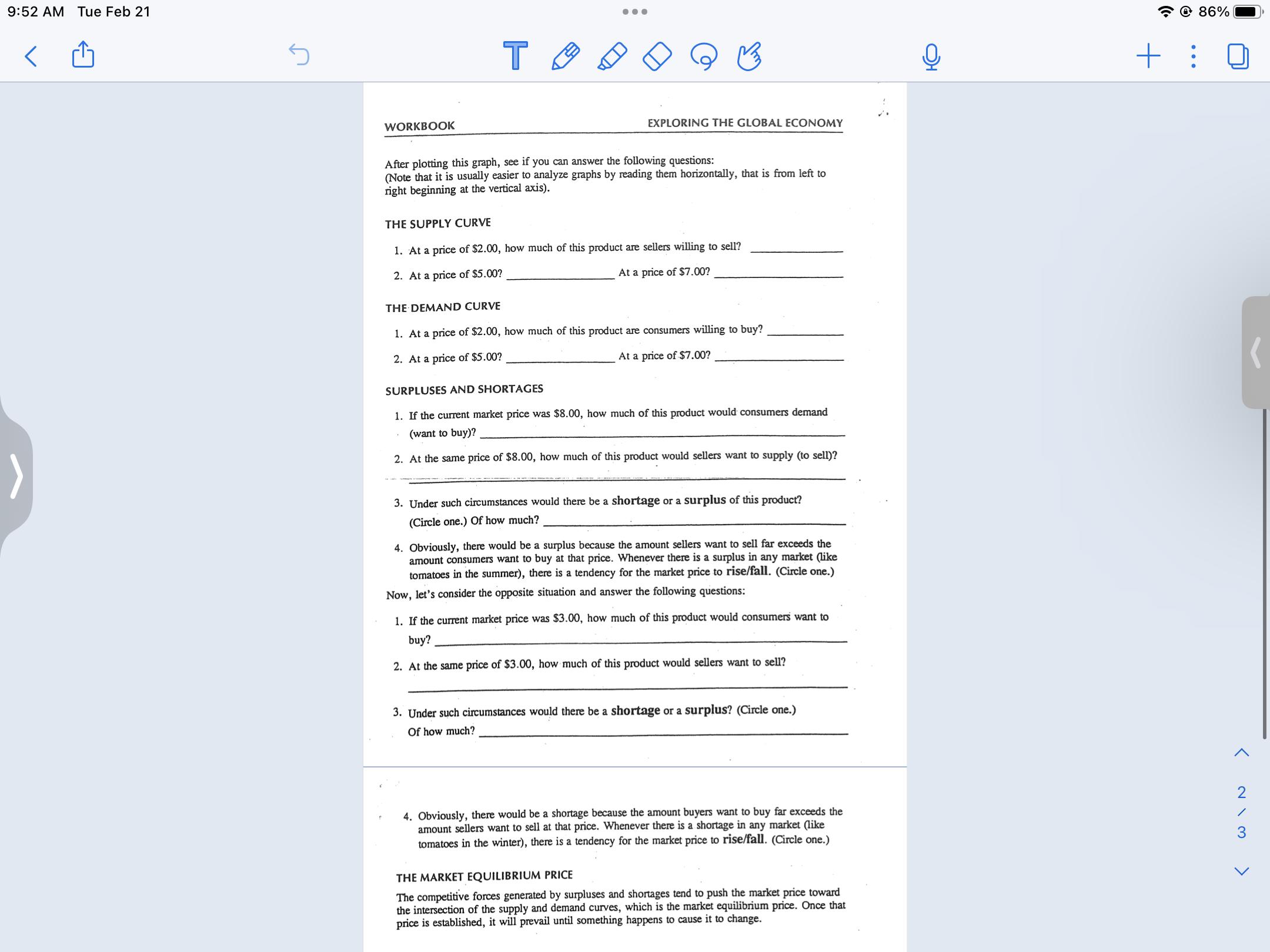Answered step by step
Verified Expert Solution
Question
1 Approved Answer
Since prices often go up or down rapidly, it is important to understand why. The reason is that in a free market economy prices



Since prices often go up or down rapidly, it is important to understand why. The reason is that in a free market economy prices are determined according to the laws of supply and demand. which reflect consumers' wants and needs compared to the scarcity of the product in question. The LAW OF DEMAND suggests that most of the time buyers will buy more of anything as its price is lowered. This is because buyers are continually balancing off the satisfaction of holding money as cash against the satisfaction of having the product. When the price of a product falls, buyers can get more of it for the same amount of cash, so they do. The LAW OF SUPPLY suggests that sellers will want to sell more of anything as the price of it rises. This makes sense: the more they are being paid to do it, the more they will be willing to produce. Therefore, because DEMAND CURVES illustrate graphically the relationship between price and the quantity consumers want to purchase, they tend to slope downward and to the right when plotted on a graph. This shows that more is bought at lower prices. SUPPLY CURVES illustrate the relationship between price and the quantity that sellers want to sell. When plotted on a graph they tend to slope upward and to the right illustrating the fact that sellers are willing to sell more at higher prices. Because consumers are always looking to buy at the lowest possible price and producers always want to sell at the highest possible price, demand and supply are opposing forces. In a free-market, auction-like setting market prices are established when the supply and demand curves intersect at what is called the EQUILIBRIUM PRICE. This can be illustrated by graphing the two curves, with price on the vertical (y) axis and quantity supplied and demanded on the horizontal (x) axis. Here we make the simplest possible assumptions, which are that both the supply and demand curves are straight lines, increasing and decreasing in units of one. The relevant data is shown below. In the space provided plot the supply and demand curves. DEMAND CURVE Price Quantity 0 $10 $.9 $8 $7 $6 $ 5 $4 $3 $2 $ 1 $0 DANMASIAre 1 2 3 4 5 7 9 10 SUPPLY CURVE Quantity Price SO $. 1 $2 $ 3 $4 $ 6 $5 5 $7 81234567899 0 $9 $10 6 7 $ 8 8 10 9:52 AM Tue Feb 21 S WORKBOOK TA EXPLORING THE GLOBAL ECONOMY After plotting this graph, see if you can answer the following questions: (Note that it is usually easier to analyze graphs by reading them horizontally, that is from left to right beginning at the vertical axis). THE SUPPLY CURVE 1. At a price of $2.00, how much of this product are sellers willing to sell? 2. At a price of $5.00? At a price of $7.00? THE DEMAND CURVE 1. At a price of $2.00, how much of this product are consumers willing to buy? 2. At a price of $5.00? At a price of $7.00? SURPLUSES AND SHORTAGES 1. If the current market price was $8.00, how much of this product would consumers demand (want to buy)? 2. At the same price of $8.00, how much of this product would sellers want to supply (to sell)? 3. Under such circumstances would there be a shortage or a surplus of this product? (Circle one.) Of how much? 4. Obviously, there would be a surplus because the amount sellers want to sell far exceeds the amount consumers want to buy at that price. Whenever there is a surplus in any market (like tomatoes in the summer), there is a tendency for the market price to rise/fall. (Circle one.) Now, let's consider the opposite situation and answer the following questions: 1. If the current market price was $3.00, how much of this product would consumers want to buy? 2. At the same price of $3.00, how much of this product would sellers want to sell? 3. Under such circumstances would there be a shortage or a surplus? (Circle one.) Of how much? 4. Obviously, there would be a shortage because the amount buyers want to buy far exceeds the amount sellers want to sell at that price. Whenever there is a shortage in any market (like tomatoes in the winter), there is a tendency for the market price to rise/fall. (Circle one.) THE MARKET EQUILIBRIUM PRICE The competitive forces generated by surpluses and shortages tend to push the market price toward the intersection of the supply and demand curves, which is the market equilibrium price. Once that price is established, it will prevail until something happens to cause it to change. O)+ @86% + : < 3 >
Step by Step Solution
★★★★★
3.39 Rating (146 Votes )
There are 3 Steps involved in it
Step: 1
In a graph of supply and demand curves the vertical axis represents price while the horizontal axis ...
Get Instant Access to Expert-Tailored Solutions
See step-by-step solutions with expert insights and AI powered tools for academic success
Step: 2

Step: 3

Ace Your Homework with AI
Get the answers you need in no time with our AI-driven, step-by-step assistance
Get Started


